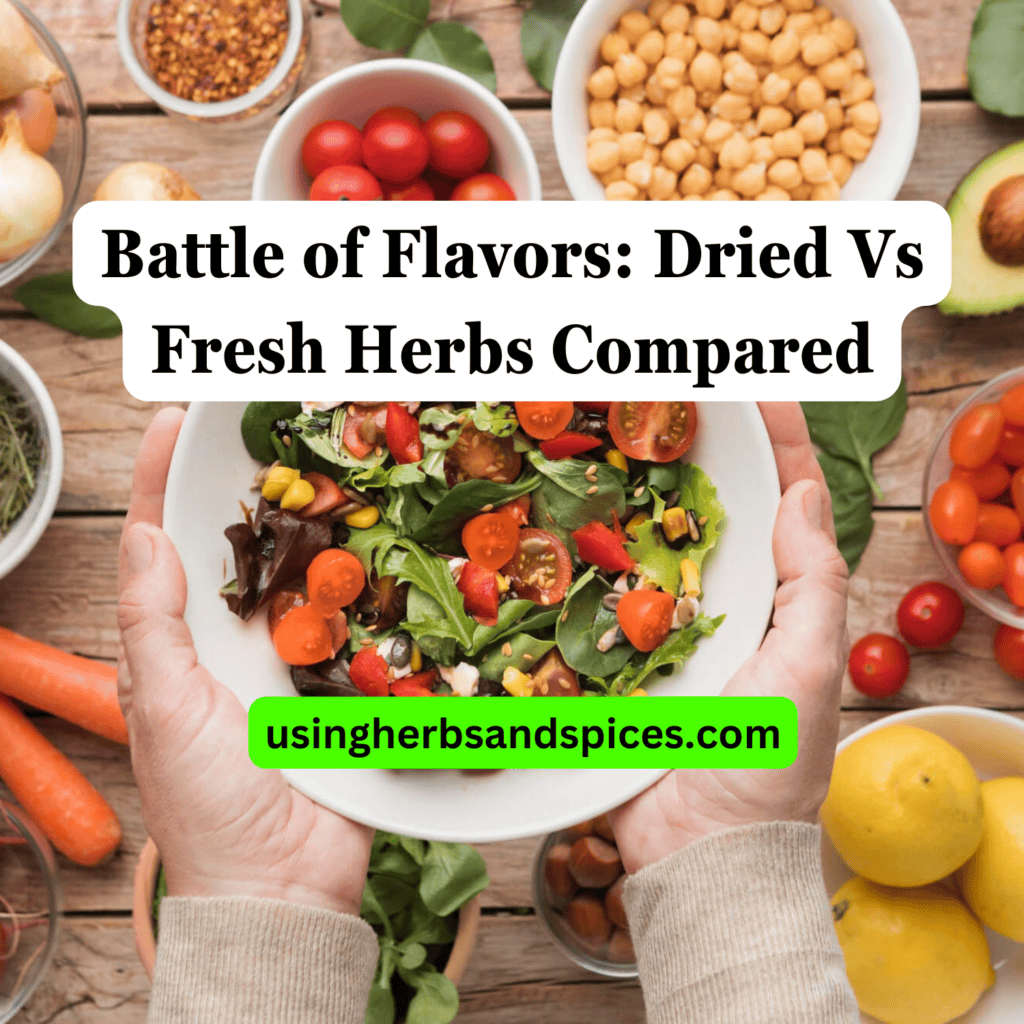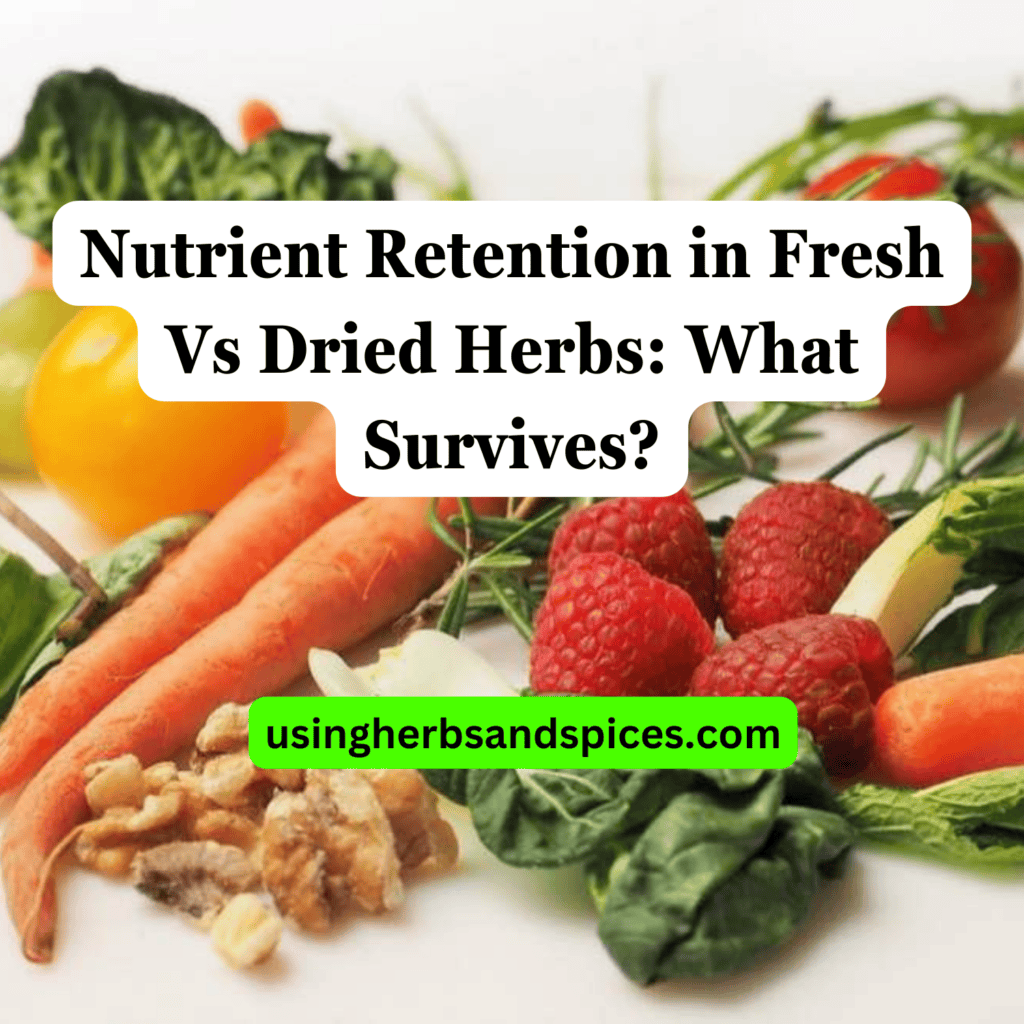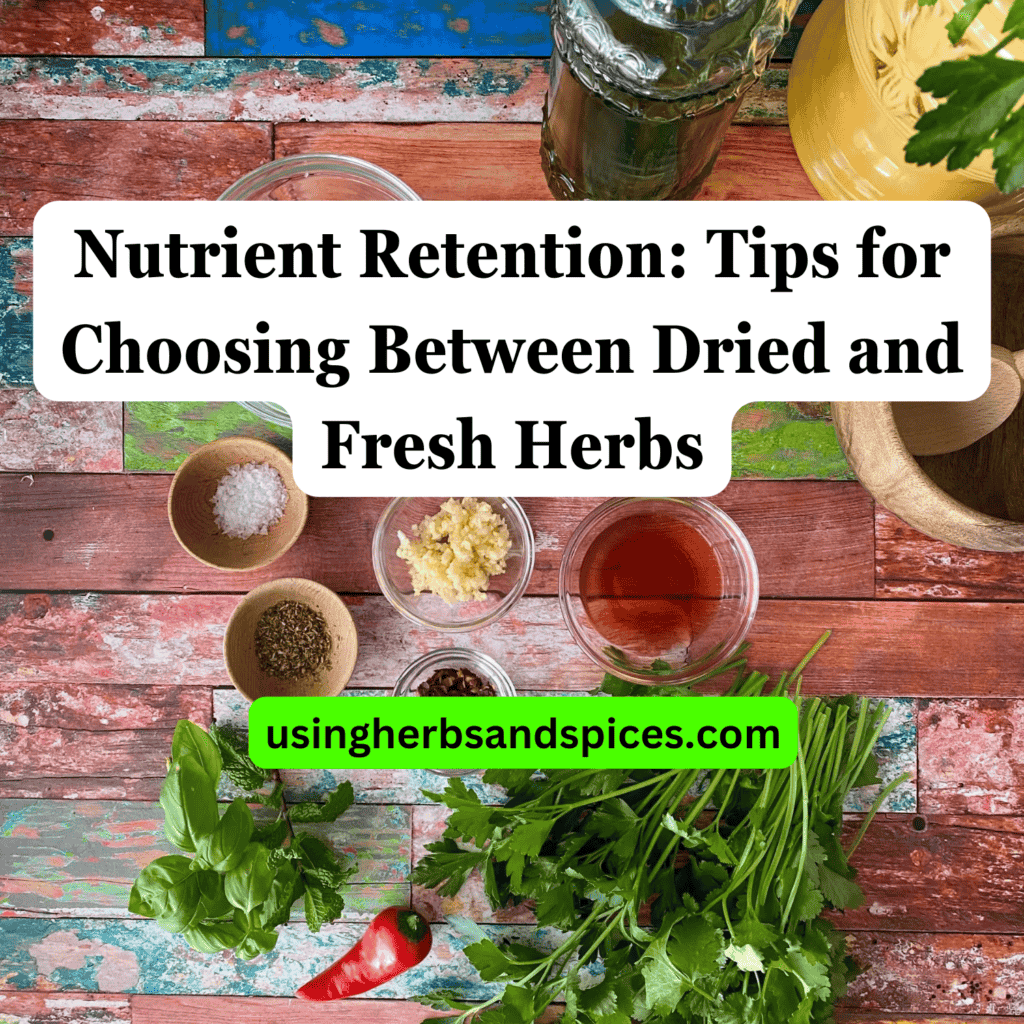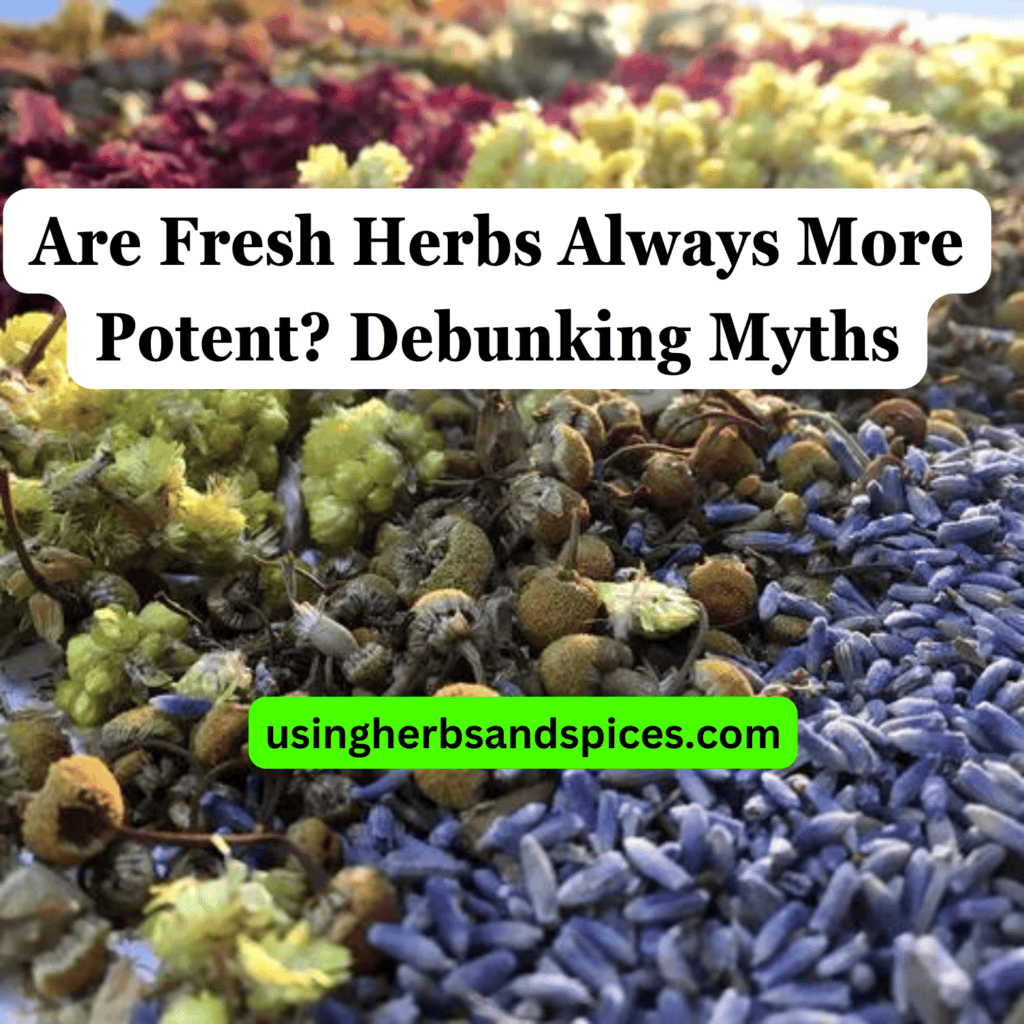SUMMARY: Drying herbs can lock in their nutrients, especially in varieties like rosemary and thyme, but fresh herb storage is key for vitamins in basil and parsley. Learning the right storage methods ensures maximum nutrient retention, whether dried or fresh.
Are you struggling to maintain the nutritional value of herbs in your kitchen?
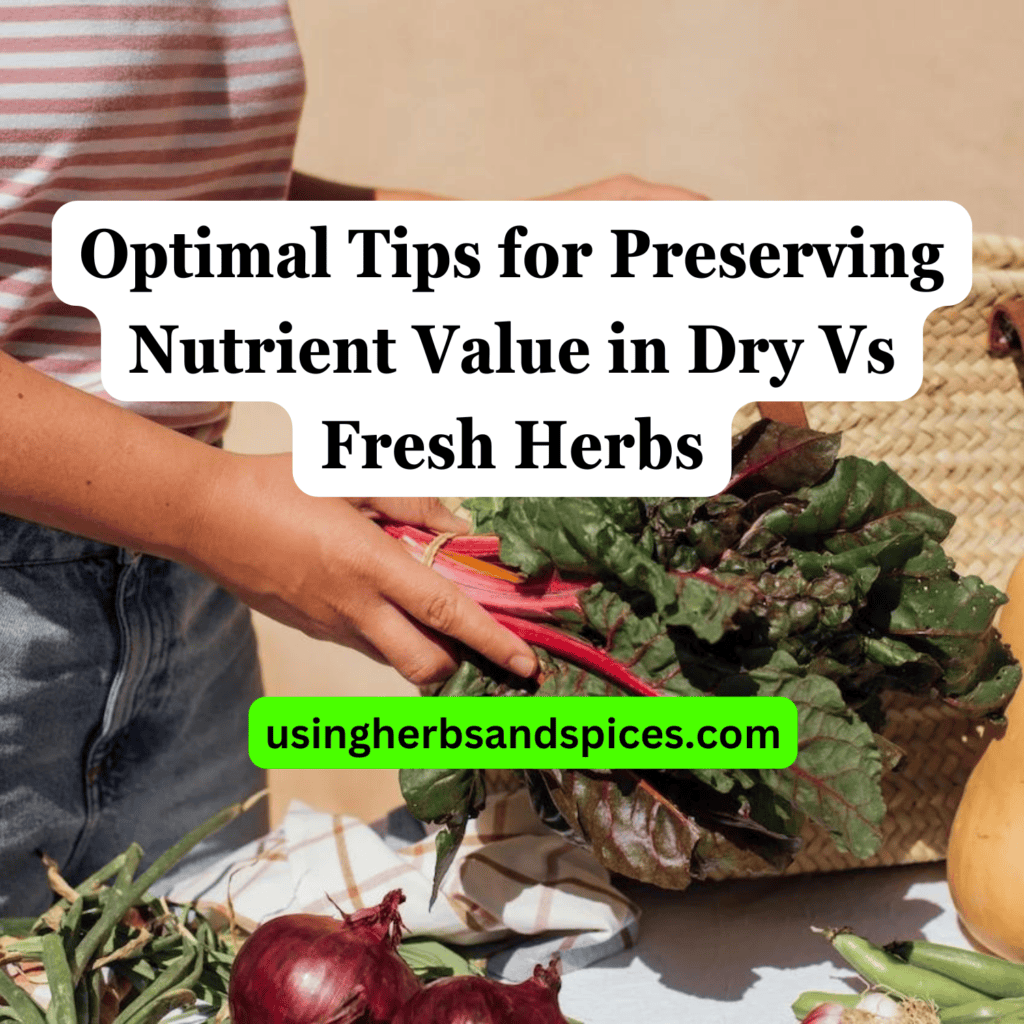
Understanding the optimal preservation methods can be the key to enhancing your meals and health.
-
- The science of nutrient preservation in herbs.
- Which herbs are best suited for drying?
- Tips for storing fresh herbs to retain their potency.
Continue reading to discover how you can make an informed decision on preserving the freshness and nutritional content of your herbs.
Understanding Nutrient Preservation in Herbs
Maintaining the nutritional integrity of herbs involves more than just proper storage; it requires a deep dive into the biological and chemical processes that impact vitamin and mineral retention. Whether you choose to dry your herbs or keep them fresh, each method affects their nutritional content differently. Dry preservation can enhance flavor concentration but may reduce vitamin levels, while fresh preservation maintains higher moisture content, crucial for keeping certain nutrients intact. The key lies in balancing these methods to suit individual herbs, ensuring they deliver their maximum health benefits when used in cooking and herbal remedies.
Best Herbs for Dry Preservation
Not all herbs are created equal when it comes to the process of drying. Some herbs naturally retain their vital nutrients better than others in their dried form. Understanding which herbs are best suited for dry preservation can make a significant difference in maintaining their health benefits.
Herbs such as rosemary, thyme, oregano, and sage are ideal candidates for drying. These herbs not only retain their essential oils and flavor but also preserve a high concentration of their antioxidants and vitamins when dried properly. The key to maximizing the nutritional benefits of these herbs lies in the drying process.
To ensure optimal nutrient retention, herbs should be dried slowly, away from direct sunlight and in a well-ventilated area. Traditional air-drying or using a low-temperature oven can be effective methods. It is crucial to monitor the herbs carefully during the drying process to prevent any loss of potency or degradation of vitamins and minerals.
Incorporating these dried herbs into your diet can be a convenient way to enhance your meals with both flavor and nutritional benefits. Whether used in cooking, as part of herbal teas, or even as supplements, selecting the right herbs for dry preservation can support your health and well-being.
Optimal Methods for Fresh Herb Storage
Storing fresh herbs properly is crucial for maintaining their nutritional value and flavor. The key to preserving fresh herbs lies in understanding their unique requirements, as well as the environment they thrive in. Here are several methods to ensure your herbs retain their beneficial properties for as long as possible.
- Refrigeration: Most fresh herbs like parsley, cilantro, and dill benefit from being stored in the refrigerator. Wrap the herbs in a damp paper towel and place them in a plastic bag or use special herb storage containers designed to regulate moisture.
- Herb stems in water: Similar to fresh flowers, herbs such as basil and mint can be kept in a cup of water at room temperature. This method not only helps in retaining their nutrients but also keeps the herbs vibrant and flavorful.
- Avoiding excess moisture: While some moisture is beneficial, too much can lead to mold and decay. Ensure that the herbs are not too wet before storing, and check them regularly to remove any spoiled parts.
- Freezing: Freezing is a viable option for extending the life of your herbs without significant nutrient loss. Herbs can be frozen whole, chopped, or pureed in oil or water. This method is particularly suitable for herbs like chives, lemongrass, and basil.
By employing these methods, you can greatly extend the shelf life of your herbs, ensuring they remain a nutrient-rich addition to your meals. Remember, the fresher the herb, the higher its nutritional content, so it’s best to use herbs as soon as possible after purchase or harvest.
Comparing Dry and Fresh: Nutrient Impact
When deciding between dry and fresh herbs, understanding how each preservation method influences their nutritional content is essential. Drying herbs reduces their water content, concentrating their flavors and nutrients, albeit with some degree of nutrient loss. In contrast, fresh herbs maintain their natural moisture content and thus their vitamins and minerals, but they may not always be practical for long-term storage.
Research indicates that drying can affect the vitamin C content in herbs significantly, since it is sensitive to heat and air exposure. However, minerals such as iron and magnesium remain relatively stable during the drying process. Antioxidants in herbs, depending on their type, can either decrease or actually become more concentrated after drying. For instance, oregano and thyme retain their antioxidant properties well when dried.
Fresh herbs usually offer higher levels of certain vitamins, particularly vitamin C, compared to their dried counterparts. However, when it comes to ease of storage and shelf life, dried herbs offer clear advantages. They can be stored for longer periods without losing their essential oil content, which is responsible for both flavor and health benefits.
Ultimately, the choice between dry and fresh herbs should be guided by the intended use, storage capabilities, and nutritional needs. Incorporating a mix of both in your diet can be a great way to enjoy the full spectrum of flavors and health benefits they offer.
Maximizing Nutrients: Fresh vs. Dried Herbs Explained
In summarizing the essentials of nutrient preservation in herbs, it becomes evident that the choice between dry and fresh methods plays a crucial role in maximizing their health benefits.
- Understanding the science behind nutrient preservation helps in making informed decisions on how to store herbs.
- Certain herbs retain more nutrients when dried, while others are best kept fresh.
- Proper drying techniques are critical for maintaining the nutritional value of dry herbs.
- Storing fresh herbs requires specific conditions to preserve their vitamins and minerals effectively.
- Comparing dried and fresh herbs reveals significant differences in nutrient content, emphasizing the need to choose the appropriate preservation method based on the herb type.
Optimal Tips for Preserving Nutrients in Dry Vs Fresh Herbs FAQs
Which preservation method is better for nutrient retention, drying or keeping herbs fresh?
The best preservation method for retaining the nutrients in herbs depends largely on the type of herb. Some herbs maintain more nutritional value when dried, such as oregano and thyme, while others, like basil and cilantro, are better preserved fresh to maintain their vitamins and minerals. It’s crucial to consider the specific herb and its nutritional components when deciding how to preserve it.
How should fresh herbs be stored to maximize nutrient retention?
To maximize nutrient retention in fresh herbs, they should be stored properly in the refrigerator. Wrapping the herbs loosely in a damp paper towel and then placing them inside a plastic bag can help maintain their freshness and nutritional value. Some herbs may also be stored in a glass of water, similar to cut flowers, to keep them fresh. Regularly changing the water or damp paper towel can further extend their freshness.
What is the optimal way to dry herbs while preserving their nutrients?
The optimal way to dry herbs while preserving their nutrients involves drying them quickly after harvesting and choosing a method that minimizes nutrient loss. Air drying herbs in a well-ventilated, dark, and dry area helps retain their nutrients. Dehydrators can also be used to dry herbs at low temperatures, which is effective in maintaining their nutritional value by preventing the degradation of sensitive vitamins and minerals.
Do dried herbs lose their nutritional value over time?
Yes, dried herbs can lose their nutritional value over time, though they generally retain their nutrients well for up to a year when stored correctly. To minimize nutrient loss, dried herbs should be stored in airtight containers and placed in a cool, dark, and dry location. Checking the potency and freshness of dried herbs before use is also recommended to ensure they provide the desired health benefits.
Can freezing herbs preserve their nutrients better than drying or refrigerating?
Freezing herbs can indeed preserve their nutrients better than drying or refrigerating in some cases. This method can be particularly effective for herbs that do not dry well, as freezing retains the essential oils and moisture content of the herbs, along with their vitamins and minerals. However, the texture of herbs may change when frozen, so they are best used in cooked dishes where the change in texture is not noticeable.


